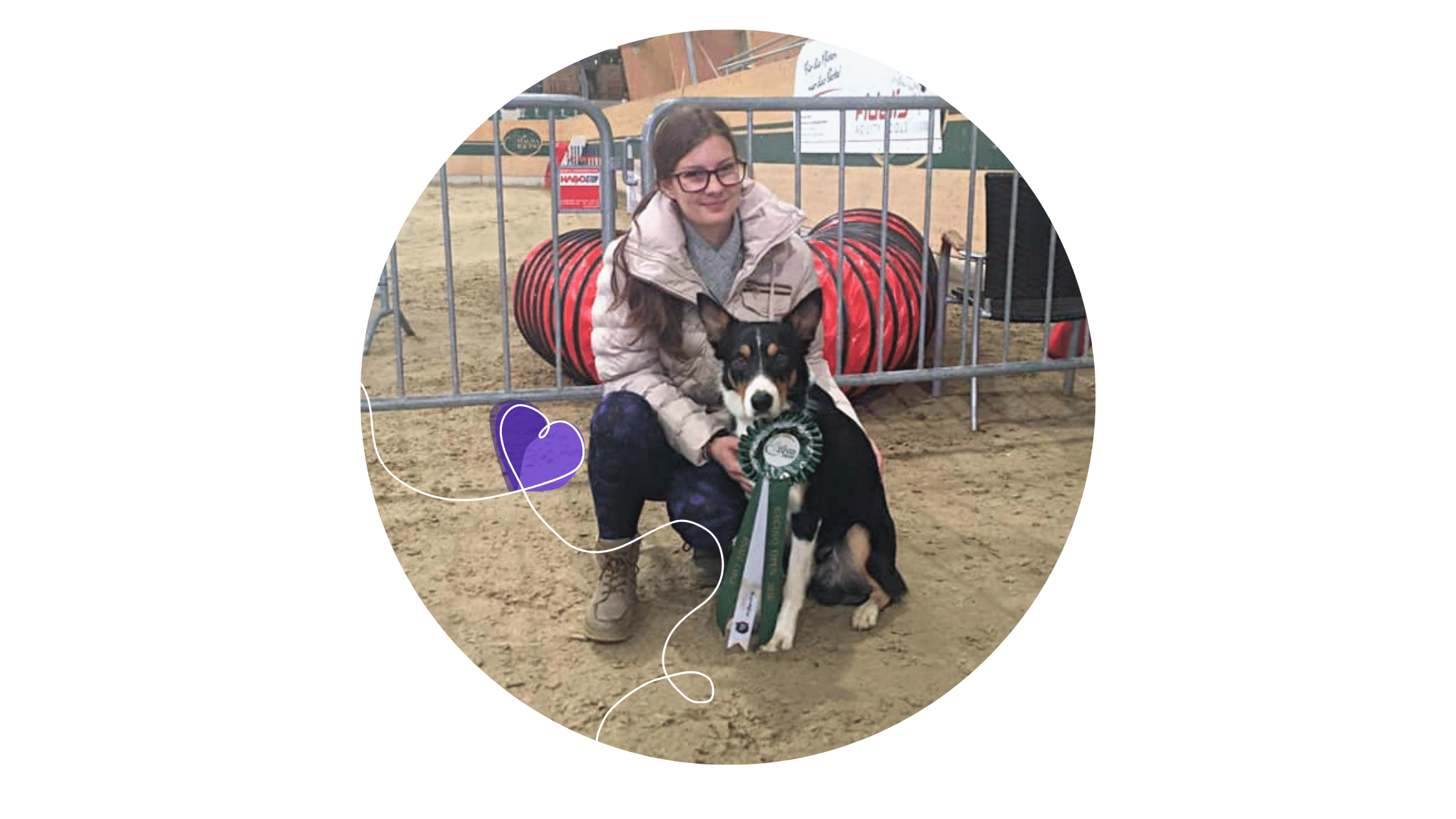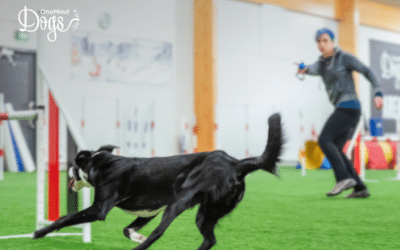What do you do when you are a motivated dog agility competitor and you injure yourself?
Agility competitor and coach Krisztina Holti and her dog Onix were competing at a high level when Krisztina experienced an injury and became unable to run at all. Still motivated to compete in agility with Onix, Krisztina focused on handling Onix from a distance. She learned to do walking agility instead of running with her dog! Krisztina shared her experience with us, and wants to share it with you as well.
Krisztina told us, “Onix always wants to give his very best for me. Over the years, he completely understood my handling style, and I learned how to be single-minded for him. An important part of distance-control is that the dog has to get unambiguous information at the right time.”
Give clear information at a distance
You might be asking: what kind of information does Krisztina mean? She must train lots of verbal cues — right? Not necessarily!
Once you understand how your dog sees the agility course, and that they’re masters of body language, you can handle from a distance using your body language too! Leading OneMind Dogs Coach Janita Leinonen wrote an article on busting distance handling myths. She tells us that your dog can read your handling even from a distance, because dogs are masters of body language. That means that if you are in the right position, and show your dog the next line at the right time, your dog will understand where to go next. You’ll see lots more examples of this in Janita’s distance handling course!
“The most important part of the process is to learn the basics (Foundation training), because if the dog learns how to focus on the obstacles, then he will be confident enough to work on the obstacles away from the handler.” – Krisztina
Teach strong basic skills for distance
Members of the OneMind Dogs community know how important Foundation training is for agility! Obstacle focus is a super helpful skill for agility dogs, because the more they look for and go to obstacles confidently, the easier it is for the handler to move through the course. We introduce obstacle focus in our Foundation program, so by the time dogs are sequencing, they can already work at a distance from the handler.
Learning is infinite
Krizstina also explained that before her accident, she trained forward sends and distance handling, but now that she can’t run, she has really learned to focus on her job as the handler:
“I had only one job, to send him forward to the right obstacles from every landing. When I walk the course, I have my attention only on where to stand and how to move, to let Onix focus on the right obstacles.”
Our dogs have taught us their rules for agility, and they understand them even when handling from a distance. Krizstina’s experience with walking agility shows us that you can not only run clean while walking, but make it to a podium too! Krizstina feels that walking agility has a lot of learning opportunities for both the dog and the handler. We agree — learning is infinite!
Watch Krisztina and Onix competing when Krisztina could only walk:



